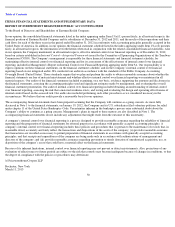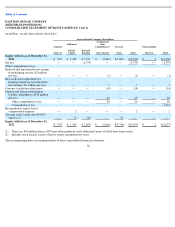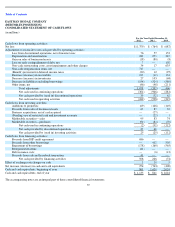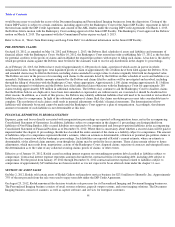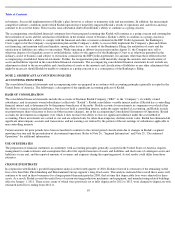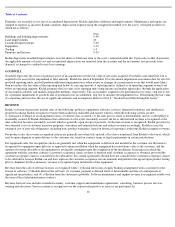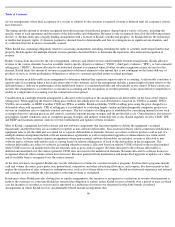Kodak 2012 Annual Report Download - page 63
Download and view the complete annual report
Please find page 63 of the 2012 Kodak annual report below. You can navigate through the pages in the report by either clicking on the pages listed below, or by using the keyword search tool below to find specific information within the annual report.
Table of Contents
EASTMAN KODAK COMPANY
(DEBTOR-IN-POSSESSION)
NOTES TO FINANCIAL STATEMENTS
NOTE 1: BANKRUPTCY PROCEEDINGS
On January 19, 2012 (the “Petition Date”), Eastman Kodak Company and its U.S. subsidiaries (collectively, the “Debtors”) filed voluntary
petitions for relief (the “Bankruptcy Filing”) under chapter 11 of the United States Bankruptcy Code (the “Bankruptcy Code”) in the United
States Bankruptcy Court for the Southern District of New York (the “Bankruptcy Court”) case number 12-10202. The Company’s foreign
subsidiaries (collectively, the “Non-Filing Entities”) were not part of the Bankruptcy Filing.
The Debtors continue to operate their businesses as
“debtors-in-possession” under the jurisdiction of the Bankruptcy Court and in accordance with the applicable provisions of the Bankruptcy Code
and the orders of the Bankruptcy Court. The Non-Filing Entities continue to operate in the ordinary course of business.
The Bankruptcy Filing is intended to permit Kodak to reorganize and increase liquidity in the U.S. and abroad, monetize non-strategic
intellectual property and businesses, fairly resolve legacy liabilities, and focus on the most valuable business lines to enable sustainable
profitability. The Debtors’ goal is to develop and implement a reorganization plan that meets the standards for confirmation under the
Bankruptcy Code. Confirmation of a reorganization plan could materially alter the classifications and amounts reported in Kodak’s consolidated
financial statements, which do not give effect to any adjustments to the carrying values of assets or amounts of liabilities that might be necessary
as a consequence of a confirmation of a reorganization plan or other arrangement or the effect of any operational changes that may be
implemented.
OPERATION AND IMPLICATION OF THE BANKRUPTCY FILING
Under Section 362 of the Bankruptcy Code, the filing of voluntary bankruptcy petitions by the Debtors automatically stayed most actions against
the Debtors, including most actions to collect indebtedness incurred prior to the Petition Date or to exercise control over Kodak’s property.
Accordingly, although the Bankruptcy Filing triggered defaults for certain of the Debtors’ debt obligations, creditors are stayed from taking any
actions as a result of such defaults. Absent an order of the Bankruptcy Court, substantially all of the Debtors’ pre-
petition liabilities are subject to
compromise under a reorganization plan. As a result of the Bankruptcy Filing the realization of assets and the satisfaction of liabilities are
subject to uncertainty. The Debtors, operating as debtors-in-possession under the Bankruptcy Code, may, subject to approval of the Bankruptcy
Court, sell or otherwise dispose of assets and liquidate or compromise liabilities for amounts other than those reflected in the consolidated
financial statements. Further, a confirmed reorganization plan or other arrangement may materially change the amounts and classifications in the
Company’s consolidated financial statements.
The Debtors may assume, assume and assign, or reject certain executory contracts and unexpired leases subject to the approval of the
Bankruptcy Court and certain other conditions. In general, rejection of an executory contract or unexpired lease is treated as a pre-
petition breach
of the executory contract or unexpired lease in question and, subject to certain exceptions, relieves the Debtors from performing their future
obligations under such executory contract or unexpired lease but entitles the contract counter-party or lessor to a pre-petition general unsecured
claim for damages caused by such deemed breach. Generally, the assumption of an executory contract or unexpired lease requires the Debtors to
cure any existing defaults under such executory contract or unexpired lease.
Subsequent to the Petition Date, the Debtors received approval, but not direction, from the Bankruptcy Court to pay or otherwise honor certain
pre-petition obligations generally designed to stabilize Kodak’s operations. These obligations related to certain employee wages, salaries and
benefits, certain customer program obligations, and the payment of vendors and other providers in the ordinary course for goods and services
received after the Petition Date. The Debtors have retained, pursuant to Bankruptcy Court approval, legal and financial professionals to advise
the Company in connection with the Bankruptcy Filing and certain other professionals to provide services and advice in the ordinary course of
business. From time to time, the Debtors may seek Bankruptcy Court approval to retain additional professionals.
The U.S. Trustee for the Southern District of New York (the “U.S. Trustee”) has appointed an official committee of unsecured creditors (the
“UCC”) as well as an official committee of retired employees (“Retiree Committee”). The UCC, the Retiree Committee and their legal
representatives have a right to be heard on all matters affecting the Debtors that come before the Bankruptcy Court. There can be no assurance
that the UCC will support the Debtors’ positions on matters to be presented to the Bankruptcy Court in the future or on any reorganization plan,
once proposed.
REORGANIZATION PLAN
In order for the Debtors to emerge successfully from chapter 11, the Debtors must obtain the Bankruptcy Court’s approval of a reorganization
plan, which will enable the Debtors to emerge from chapter 11 as a reorganized entity operating in the ordinary course of business outside of
bankruptcy. In connection with a reorganization plan, the Company also may require a new credit facility, or “exit financing”. The Company’s
ability to obtain such approval and exit financing will depend on, among other things, the timing and outcome
59



